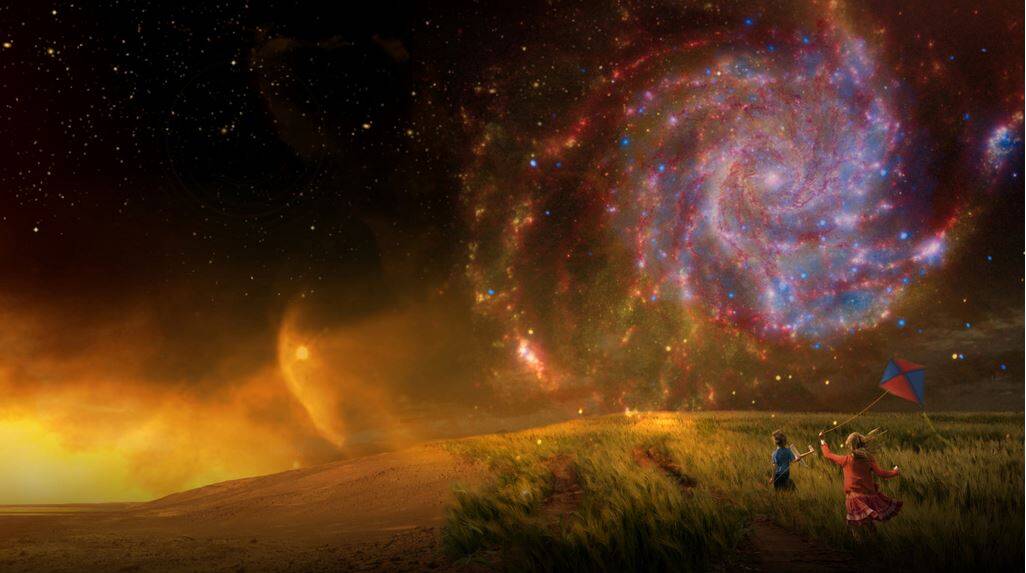NASA is stepping up the search for alien life outside our solar system by bringing together science experts from various fields in what it describes as “an unprecedented initiative dedicated to the search for life.” NExSS (Nexus for Exoplanet System Science) aims to better understand various components of an exoplanet, as well as how its stars and neighbor planets interact to support life.
In 2013, a HuffPost/YouGov poll found that 50% of Americans believed there is some form of life on other planets, 33% said they were not sure, while 17% responded that there isn’t. Since then, the percentage of believers has probably increased, especially since so much water has been detected in Mars and across the Universe.
Jim Green, NASA’s Director of Planetary Science, said:
“This interdisciplinary endeavor connects top research teams and provides a synthesized approach in the search for planets with the greatest potential for signs of life.”

Alien life could come in many forms.
“The hunt for exoplanets is not only a priority for astronomers, it’s of keen interest to planetary and climate scientists as well.”
The study of exoplanets – planets outside our solar system that orbit a star – is a relatively new field. The first exoplanet orbiting a star like our own Sun was discovered in 1995.
Since NASA’s Kepler space telescope was launched in March 2009, over 1,000 exoplanets have been discovered, with several thousand additional candidates waiting to be confirmed.
Researchers are developing ways to confirm the habitability of these planets and search for signs of life (biosignatures).
The key to this effort is understanding how biology interacts with the interior, oceans, geology and atmosphere of a planet, and how these interactions are influenced by the host star.
According to NASA, this system science approach will help researchers better understand how to seek out life on exoplanets.
NexSS will be able to tap into the collective expertise of each of the science communities supported by the space agency’s Science Mission Directorate:
– Earth Scientists: who develop a systems science approach to studying planet Earth.
– Planetary Scientists: who apply systems science to a wide range of worlds within our solar system.
– Heliophysicists: who study of the effects of the Sun on the Solar System, will add another layer to this systems science approach.
– Astrophysicists: who provide data on exoplanets and their host stars.

For centuries humans have looked to the skies and wondered “Are we alone in the universe?” (Image: NASA)
Are we alone?
NASA says NexSS will bring together these eminent research communities in an unprecedented collaboration, to share research results, perspectives, and approaches in the pursuit of one of the oldest and most-asked questions humans ask: “Are we alone?”
The team will help classify the diversity of exoplanets being discovered, understand the potential habitability of these worlds, and develop technologies and tools required in the search for life outside our Solar System.
Director of the Astrophysics Division at NASA Headquarters, Washington, Paul Hertz, said:
“NExSS scientists will not only apply a systems science approach to existing exoplanet data, their work will provide a foundation for interpreting observations of exoplanets from future exoplanet missions such as TESS, JWST, and WFIRST.”
TESS (Transiting Exoplanet Survey Satellite) is set to be launched in 2017, while the JWST (James Webb Space Telescope) is scheduled for a 2018 launch. The Wide-field Infrared Survey Telescope is planned for a 2020s launch.
According to NASA:
“NExSS will be led by Natalie Batalha of NASA’s Ames Research Center in Moffett Field, California; Dawn Gelino with NExScI, the NASA Exoplanet Science Institute at the California Institute of Technology in Pasadena; and Anthony del Genio of NASA’s Goddard Institute for Space Studies in Greenbelt, Maryland. The NExSS project will also include team members from 10 different universities and two research institutes. These teams were selected from proposals submitted across NASA’s Science Mission Directorate.”
James Graham leads the team from the University of Berkeley, California and Stanford, near Palo Alto, California. This group, called Exoplanets Unveiled, will concentrate on the question: “What are the properties of exoplanetary systems, particularly as they relate to their formation, evolution, and potential to harbor life?”
The team from the University of Arizona, Tucson, will be known as the Earths in Other Solar Systems group, and will be led by Daniel Apai.
Milky Way likely teeming with life
Australian and Danish scientists wrote in March in the journal Monthly Notices of the Royal Astronomical Society that the Milky Way should be teeming with life. Our galaxy has billions of stars, with one to three planets in the Habitable Zone orbiting each one.
The Habitable Zone (Circumstellar Habitable Zone), known informally as the Goldilocks Zone, is the region around a star within which exoplanets might have sufficient atmospheric pressure, the right temperatures, and liquid water to support life as we know it.
Should we advertise our existence in space?
Eminent theoretical physicist, cosmologist and author Professor Stephen Hawking wonders whether we should try to make contact with aliens, who may be more intelligent and technologically advanced than we are.
Prof. Hawking reminded us what happened to the American Indian after Christopher Columbus set foot on their land. “It didn’t turn out very well for the Native Americans,” he said.
BBC Video – Are we alone in the Universe?
